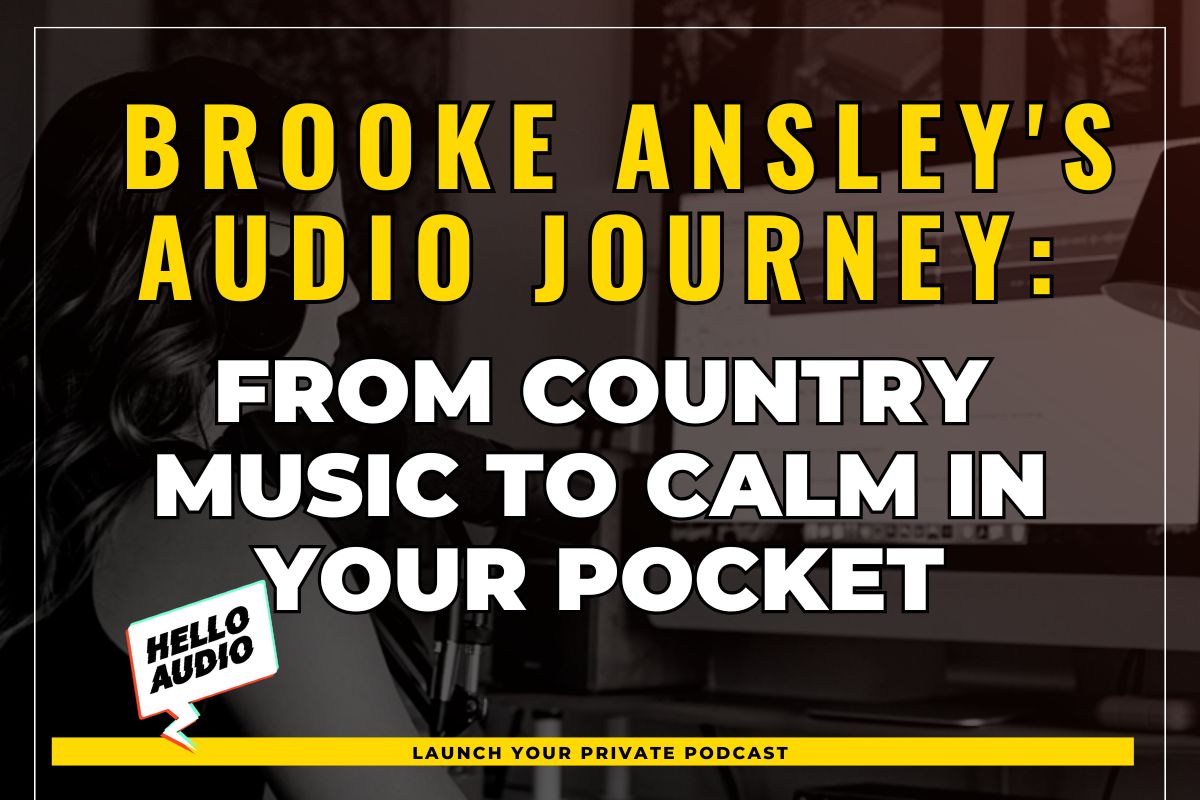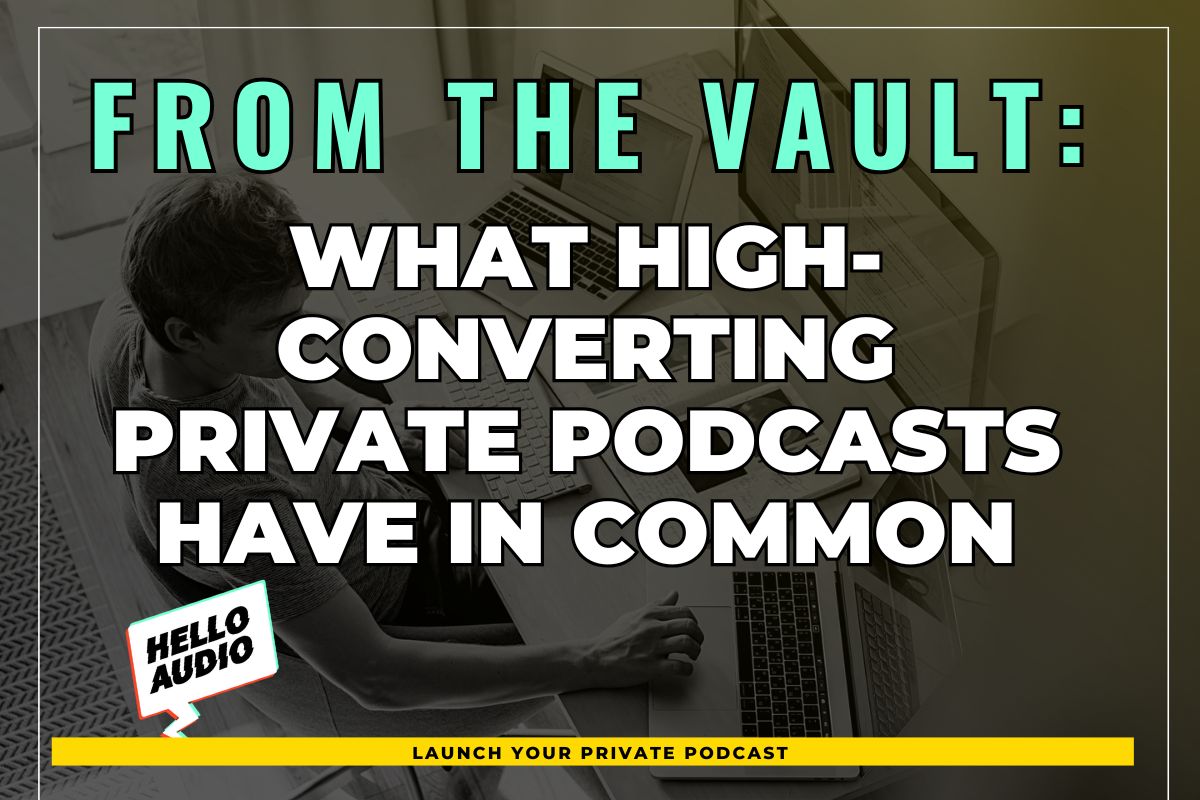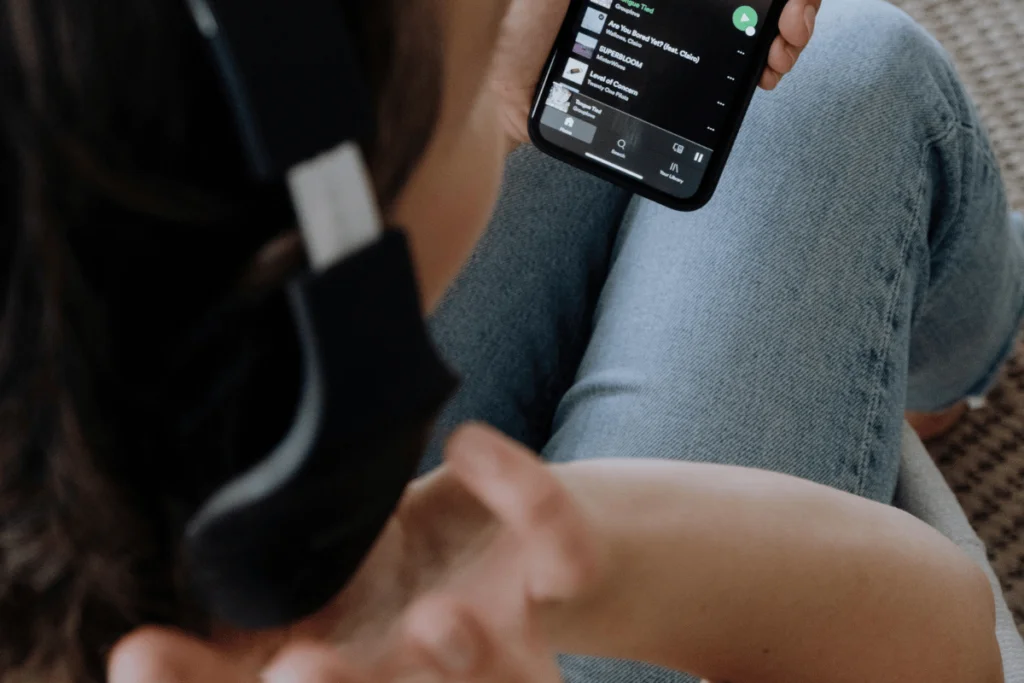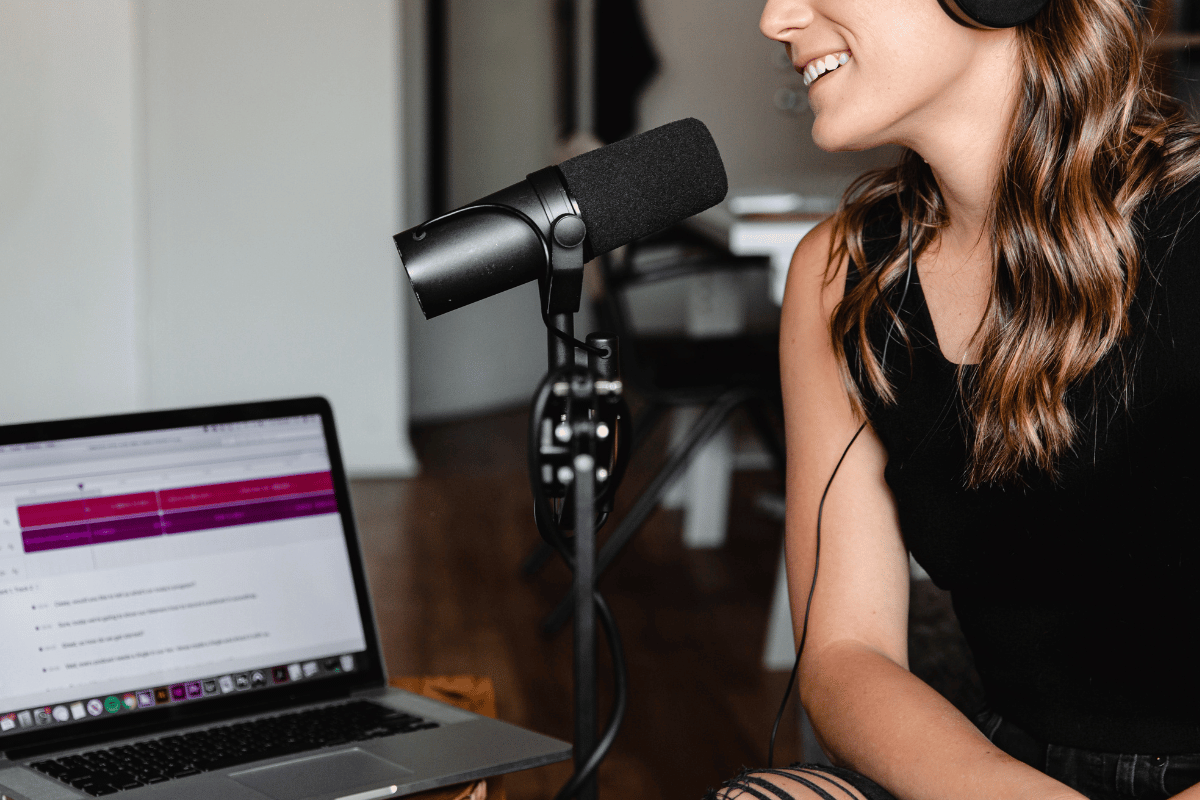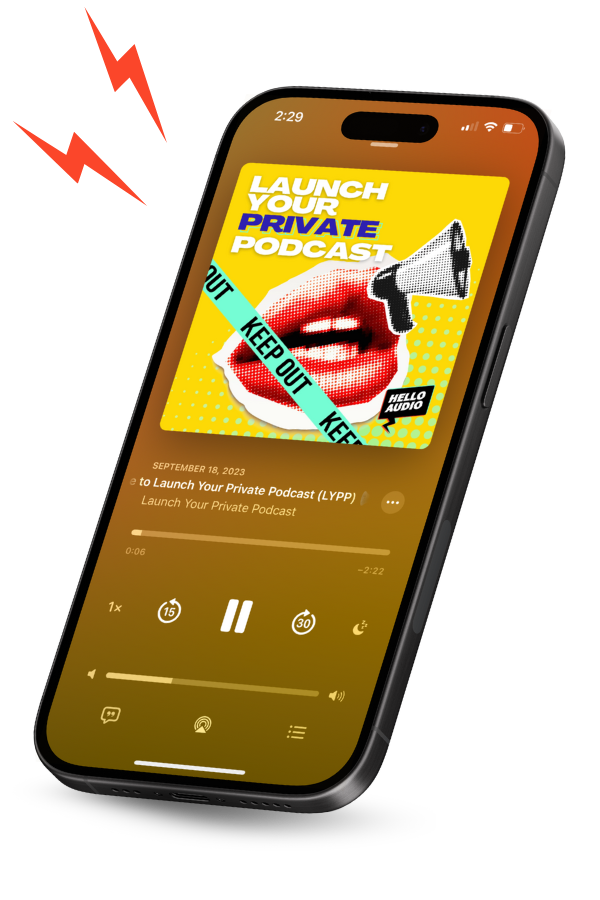There’s no denying that you must create and post content across social media platforms to scale and stay relevant. However, most business owners and content creators can’t keep up with the demands of constantly producing, creating, and pumping new content.
There’s a simple and elegant solution to this – content repurposing!
According to SEMrush’s recent report, 42% of the marketers said repurposing existing content led to successful marketing efforts.
In this blog, we’ll cover the basics and outline the benefits of content repurposing. We’ll also discuss the different strategies to repurpose content and list examples of companies repurposing content.
Let’s get started.
What is Content Repurposing?
Content repurposing is reusing or recycling content to reach more people and boost your visibility across different platforms. You can use different ways to repurpose content, including converting videos into podcast sessions.
For instance, Hello Audio can help you convert long-form videos and audio — such as webinars, digital courses, presentations, call meetings, and events — into private podcasts.
You can control podcast access and segment content using tags to target the right people. Additional features like pre-roll and post-roll content help you create custom listening experiences.
Start your free 7-day trial (no credit card is required) and boost your content consumption to foster stronger connections with your audience!

Benefits of Repurposing Content for Social Media
Let’s go over the benefits of repurposing content for social media:
- Expands Your Reach: When repurposing content, you can impact a bigger audience on different platforms.
- Reinforce Your Brand Message: Your audience needs to hear your message consistently before they take action. So, repurposing content reinforces your message.
- Saves Time: Even though you’ll be on different platforms, you won’t have to create content day in and day out.
- Leverage Data: Repurposing eliminates guesswork; you can repost engaging content based on data and what your audiences prefer.
- Improved SEO and Traffic: Using multiple pieces of content with the same target keywords might boost your organic traffic and visibility.
- Eliminates Burnout: Content creation blocks will be a thing of the past since you don’t have to create new content now and then.
- Improves Your Brand Presence: Posting similar messages across social media platforms can build trust and loyalty in your audience.

5-Step Content Repurposing Framework
Given the benefits discussed above, let’s review this easy-to-follow roadmap to guide your content repurposing strategy:
1. Identification of Core Content
Start by identifying your top-performing content. There’s a great chance that content that gets the most engagement will resonate with your audience when repurposed.
2. Audience Analysis and Platform Selection
Once you’ve identified the content, choose the right social media platforms to share your repurposed content. Analyze the distinct features of each platform and understand where your target audience is most active.
Importantly, understand the interests, behavior, and demographics of your audience. This data will guide you in refining your repurposing strategy.
3. Content Transformation Strategies
The next step should be to restructure and customize your content accordingly to cater to the requirements of each platform.
4. Distribution and Promotion Tactics
As you distribute your content, understand the different content formats and the post times that work best for your brand.
Besides, you should promote and boost your content using social media ads to help you target a wider audience. You can also collaborate with influencers and partners.
Don’t forget to include share buttons, embedded codes, and CTAs that prompt the audience to engage.
5. Performance Measurement and Analysis
Finally, monitor the performance and track your goals to understand whether your repurposing strategy works.
Track your engagement, organic traffic, conversion rates, and SEO metrics. Each metric might vary based on the platform and the content format. Some platforms have analytics tools to help you dig into the numbers.
Check out our guide on content repurposing workflow to maximize the value of your existing content.
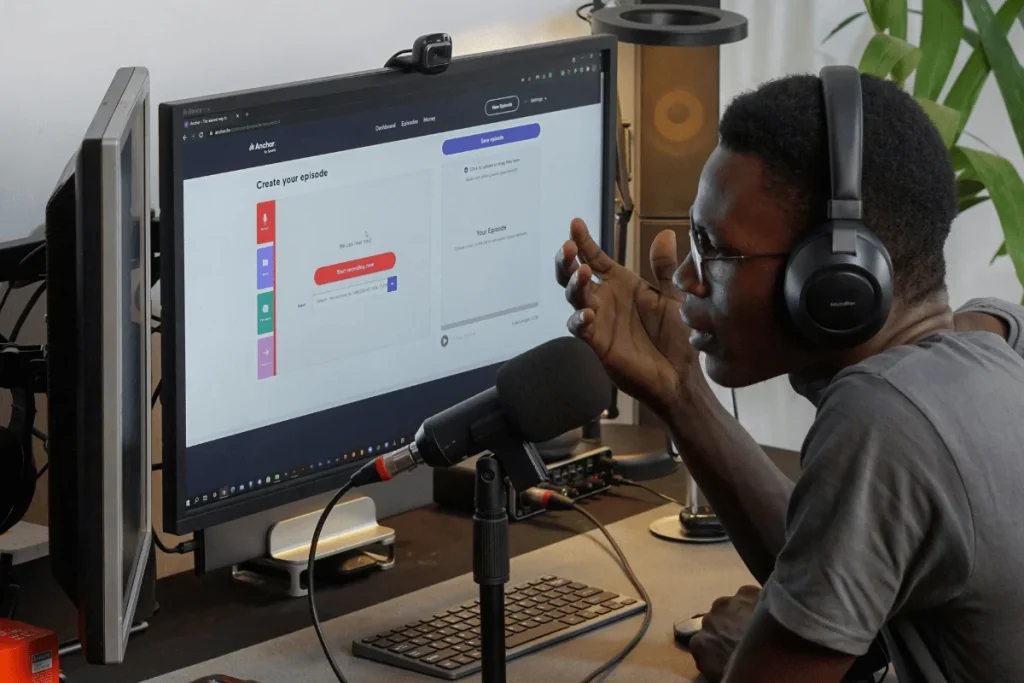
Content Repurposing Strategy on Social Media
Let’s dive into some ideas for repurposing content for your social media:
Cross-posting Content on Different Platforms
You don’t have to create unique content for each of your socials. Whether videos, blog posts, short clips, carousels, or podcasts, you should cross-post the same content on Instagram and Facebook. You can also share them on TikTok, YouTube, Snapchat, and more.
Remember to leverage the strengths of each social media platform for maximum impact.
Creating Short Clips From Long-form Videos
Short clips — YouTube shorts, Instagram Reels, and TikToks — are increasingly becoming popular. Creators and business owners are using short videos to grow.
However, it’s not easy to create short clips from scratch, but you can repurpose existing long videos into short videos.
Turning Blog Posts Into Infographics
Another great strategy is to pull up some key takeaways and summarize your blog post into visual summaries. Infographics are great for people who prefer visuals — capturing and remembering the information is easy.
Plus, you can share the infographics on social media sites like Pinterest.
Repurposing Blog Posts Into Social Media Posts
Alternatively, convert blog posts into multiple pieces of social content.
You can convert blogs into visual guides on YouTube, create infographics from summaries on your blog, create a podcast out of the blog, or design carousels and video clips. These are great ways to expand on a specific blog topic.
Using Blog Posts As a Basis for Email Marketing Campaigns
Another way to repackage a blog post is to increase its reach and share it with your email list.
You can tweak the key takeaways from your blog post, create interesting week-long emails, or share it as an email course. So, you can nurture your customers with valuable content and relevant insights on specific topics.
Pro Tip: You can use any of the multiple content repurposing tools available to ease your process.

How to Repurpose Blog Content For Social Media
As discussed above, the possibilities to repurpose blog content for social media are endless.
Here is a step-by-step guide to repurposing a blog post.
- Choose a blog post — it should be interesting and informative with a lot of traffic.
- Transform the blog into a video, infographic, ebook, short clip, or podcast.
- Post the video or content on Instagram, TikTok, and Facebook platforms.
- Promote the posts on social media.

Tips to Repurpose Content for Different Audience Segments
Your audience isn’t a single, uniform group. Different people respond to content in different ways – the same blog post or video can resonate with some segments but miss others.
These tips will help you mindfully repurpose content for different audience segments:
Identify Your Audience Segments
Before you start, figure out who you are trying to reach. Existing customers, potential leads, industry pros, niche communities, because each of them consumes content differently.
Analytics, surveys, and engagement data can help you see what each segment actually cares about.
Tailor Tone and Messaging
Once you’re aware of those segments, adjust your tone and messaging accordingly. If your audience wants more detailed information, they might like deep-dive guides or case studies.
Whereas casual followers would respond better to bite-sized tips, visual summaries, or short videos. It’s the same content, just framed in a way that clicks for them.
Match Platforms to Segments
Each segment often has a preferred platform. A higher percentage of TikTok or Instagram reels consumers are younger, while business decision-makers consume most of their content on LinkedIn or through newsletters.
You need to repurpose your content in a format that fits both the platform and the segment consuming it.
Highlight Segment-Specific Insights
Pull out the parts of your content that will actually resonate with each audience group. A blog post on social media strategy, for example, can be adapted in different ways, like:
- Beginners: A simple, step-by-step guide that makes it easy to follow.
- Industry professionals: A deep dive into trends, data, and strategies they can apply immediately.
- Executives or decision-makers: A quick visual summary or infographic with key stats and takeaways.
The idea is to surface the information that’s most relevant to each group. When your content speaks directly to what they care about, it hits harder and gets more engagement.

5 Tips for Repurposing Video Content
We will dive into the top five tips for repurposing video content to help you get the most out of your content.
But before that, learn how to repurpose your video and audio content easily with Hello Audio.
Hello Audio is the perfect tool for repurposing your videos and audio into private podcasts. Additionally, your podcasts are automatically posted on leading platforms, including Spotify, Apple Podcasts, and Google Podcasts.
Your listeners can access your content on the go, and you can leverage advanced features on Hello Audio to build a lasting relationship with your audience.
You can try it for free for 7 days and join our users who have seen more than 2 million downloads of their private podcasts with Hello Audio.
And while you do that, here are some tips to get you going:
1. Assess and Segment the Original Video Content
Once you’ve identified a video, it’s time to modify your content accordingly.
Whether it’s short clips for Instagram or extracting audio from the video to create podcast episodes, format the video content according to the distinct features of each platform.
You could also take one or two critical points from your video and use them as trailers or teasers. Once you’ve piqued your audience’s attention, you can point them to the full video.
2. Create Platform-Specific Edits
Different platforms have specific requirements and limitations. So, adapt your content creatively and tailor it to meet the standards of each platform to maximize its impact.
For instance, YouTube favors 15-minute (or longer) in-depth videos, while TikTok and Instagram prioritize 60-second clips. Adjust the videos to specific aspect ratios like 1:1 or 9:16.
3. Add Value With Additional Elements
You should maximize the value of each video. For instance, incorporate transcripts and captions, links, hashtags, and location tags to encourage engagement.
Consider translating it into different languages to reach non-English speakers. Also, introduce polls, quizzes, and on-screen graphics to social media clips.
4. Optimize for Search and Accessibility
Don’t forget to improve SEO rankings by optimizing content for each site.
For example, you can develop catchy text with relevant hashtags for Twitter and leverage trending sounds and hashtags for TikTok. If you prefer LinkedIn, short clips and infographics perform well.
Keep up with the changing algorithms and refine your optimization strategies accordingly.
5. Plan and Execute Distribution Strategy
While you’re being intentional about repurposing, plan and map out your publishing calendar and promotion strategies to maximize its potential. Once your content is ready, apply it to your campaigns and projects.

How to Use User-Generated Content in a Repurposing Strategy
User-generated content (UGC) is like a secret weapon you can use to boost credibility and authenticity. When your customers create content — such as reviews, photos, and videos — you can repurpose it in multiple ways.
You can make the most of it by:
Showcase Customer Reviews
Turn positive reviews into eye-catching social media graphics or banners for your website. Compile multiple testimonials into a short video montage to feature on social media or in email campaigns.
Highlighting real voices makes your content more relatable and trustworthy.
Create FAQ-Based Content
Pay attention to the questions your customers are asking. UGC often includes common concerns or queries, which you can turn into:
- A blog post answering frequently asked questions in depth.
- A video Q&A or live session (Instagram Live, YouTube, or TikTok) where you address these questions directly.

Repurpose Across Channels
UGC doesn’t have to live in one place. With permission, you can integrate it across your marketing channels:
- Turn testimonials into social media posts or ads.
- Feature customer photos in newsletters or website banners.
- Use quotes or screenshots in email campaigns.
Give Credit and Engage
Using someone’s content without acknowledgment can be troublesome. Tag the creator in your posts, leave a thoughtful comment, or send a quick thank-you.
Showing appreciation encourages more people to share their experiences and helps you build a stronger, more loyal online community around your brand.
Track Performance
As you track other repurposed content to know how it’s performing, measure UGC content as well.
Track key metrics, like engagement, click-throughs, and conversions, to see what resonates and refine your strategy over time.

How to Repurpose Content for Thought Leadership
Thought leadership is all about establishing your credibility in the industry. You can do this by demonstrating your expertise in different ways that will reach the right audience.
You need to:
- Audit Your Existing Content: Start by reviewing your blog posts, videos, webinars, and research. Look for pieces that performed well or contain unique insights. These are the foundations for thought leadership content.
- Extract Core Insights: Identify the key ideas, data points, or takeaways from each piece. Think about what makes your perspective valuable and what your audience would find most compelling.
- Adapt to Different Formats: Each platform has its strengths, so you need to share articles or carousels on LinkedIn, deep-dive videos or podcasts on YouTube or other streaming platforms, and convert key points into infographics or slide decks.
- Distribute Consistently: Build recognition by posting regularly across channels. Mix up formats to keep your content fresh and engaging.
- Engage and Refine: Don’t just publish, but interact. Respond to comments, answer questions, and get involved in conversations your content creates. Watch which posts get the most engagement and adjust your approach. Keep improving and make every piece count.

AI Content Repurposing Tools for Social Media
AI tools are redefining the game when it comes to turning your existing content into engaging social media posts. Instead of starting from scratch every time, you can repurpose blogs, videos, and long-form content into formats that grab attention.
To make this easy, we’ve listed five tools:
- Pictory AI: Pictory converts long-form text, blogs, or video scripts into short, shareable videos. It works great for Instagram Reels, TikTok, and Facebook. You get engaging visuals without having to start from scratch, making your existing content feel fresh.
- Vidyo.ai: Vidyo.ai automatically extracts highlights from long videos to create bite-sized clips ideal for social media. It’s particularly useful for repurposing webinars, tutorials, or YouTube content into short, attention-grabbing posts.
- Synthesia: With Synthesia, you can turn written content into AI-generated videos, including digital avatars. This is great for creating professional-looking video presentations or explainer clips without filming, making your content more dynamic for social platforms.
- Narrato: Narrato helps you convert blogs, video transcripts, and other content into social media updates, summaries, or posts. Its AI-driven suggestions make it easy to maintain a consistent brand voice while scaling your content across multiple platforms.
- FeedHive: FeedHive is an AI-powered social media management tool that goes beyond scheduling. It’s smart content recycling feature automatically repurposes and redistributes posts, ensuring your channels stay active and your audience remains engaged.
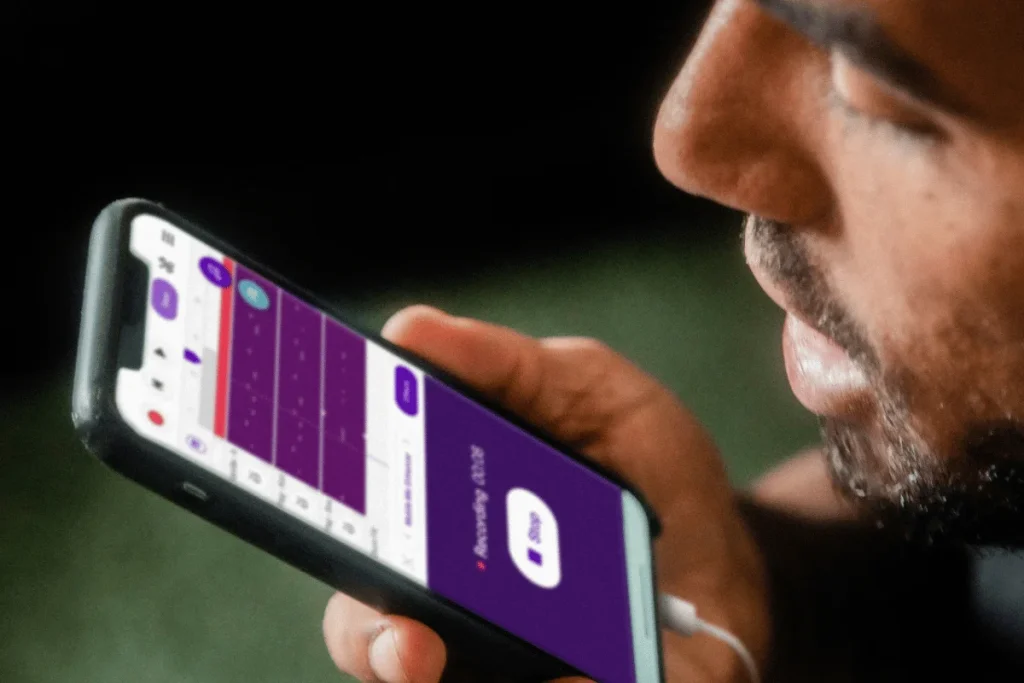
Content Repurposing Examples for Inspiration
What does repurposing mean? To put it into context, let’s see how these companies are repurposing content:
Hootsuite
Hootsuite is a well-known social media management tool. To maximize the reach of their content, they repackaged a Social Trends 2024 report into a blog post. The blog highlights the main findings from the report.
Buffer
Rather than creating new content, the Buffer team repurposed one of their blog content and packed it as an Instagram carousel. The series of swipeable carousels highlights the key takeaways of the blog post and encourages engagement.
Ahrefs
Ahrefs is well-known for its SEO tools and resources. They repackaged one of their YouTube videos — ChatGPT for SEO — into a blog post on the same topic.
Some of their audience prefer to read. So, repurposing the existing video content into a blog post ensures the brand maintains engagement and visibility.
Visme
Visme is also no stranger to repurposing content. They took one of their blog post about YouTube SEO and transformed it into a YouTube video. That’s a perfect example of repurposing content.

Frequently Asked Questions (FAQs)
Check out some of the answers to common questions regarding repurposing content:
How Do You Decide Which Content To Repurpose?
You should first analyze the existing content and identify high-performers. Besides, having clear marketing goals and understanding your audience preferences will also help.
How Can I Measure the Success of My Repurposed Content?
You can measure the success of your repurposed content by tracking metrics, such as conversions, engagement, number of followers, email open rates, and podcast download numbers.
What is a Repurposed Podcast?
A repurposed podcast is a podcast created from a course, call replays, keynotes of events, blogs, newsletters, and more.
How Often Should I Repurpose My Content?
There’s no strict rule. Repurpose high-performing content every few months and update older pieces at least once a year. Plan repurposing from the start, and focus on long-form content like webinars or articles, where you can pull multiple posts from a single piece. This keeps your social channels active without constantly creating new content.
Can Repurposed Content Improve SEO Performance?
Yes. Repurposing content lets you target new keywords and refresh older content. Each new format gives search engines more content to index, boosting visibility and organic traffic. For example, turning a blog post into a video or infographic can attract backlinks, shares, and traffic, all of which boost SEO over time.
Conclusion
That’s a wrap! We hope we’ve answered the question — what is repurposing content? — and inspired you to repurpose your content too.
Remember, repurposing video and audio content into private podcasts can be super easy with a tool like Hello Audio to save time and expand your reach.
Hello Audio quickly lets you convert your content into podcasts, allowing your listeners to access information wherever and whenever they need it.
Besides, Hello Audio is the world’s first audio CRM tool. With actionable data, you’ll get access to your listeners’ insights to build and manage your customers’ relationships. Moreover, advanced automation (tags, pre and post-roll content, and more) helps you personalize their listening experience.
Get a free instant demo and experience the impact of private podcasts on your business.





